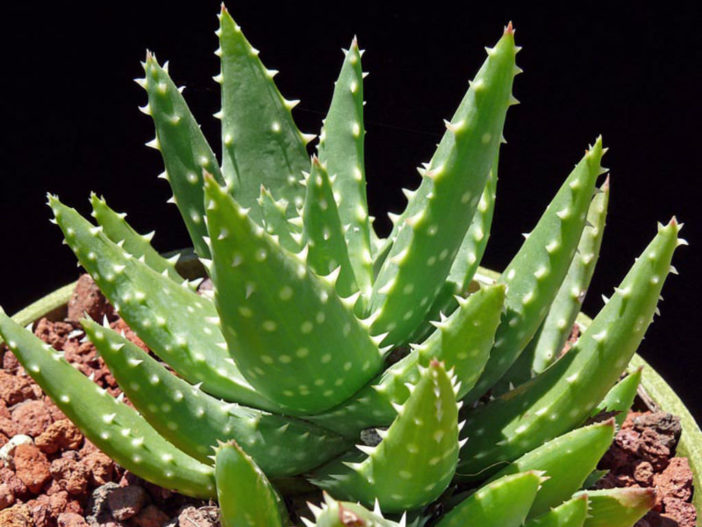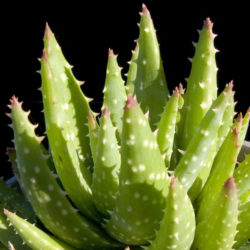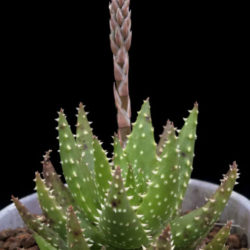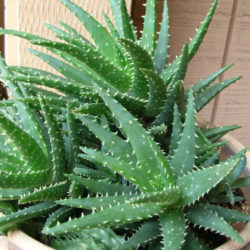Scientific Name
Aloe 'Crosby's Prolific'
Scientific Classification
Family: Asphodelaceae
Subfamily: Asphodeloideae
Genus: Aloe
Origin
Aloe 'Crosby's Prolific' is a hybrid that results from a cross between Aloe nobilis and Aloe humilis var. echinata (not recognized as a separate variety and is treated as a synonym of Aloe humilis).
Description
Aloe 'Crosby's Prolific' is a small succulent that forms attractive rosettes with deep green, lance-shaped leaves with translucent teeth along the margins and scattered on both surfaces. It offsets readily, forming a large clump with age. The fleshy leaves take on red hues when exposed to bright light.
From late winter to spring, spikes of bright orange tubular flowers are produced in profusion atop flowering stalks that can reach up to 18 inches (45 cm) in height.

Hardiness
USDA hardiness zone 9b to 11b: from 25 °F (−3.9 °C) to 50 °F (+10 °C).
How to Grow and Care
Aloes are very forgiving plants. However, as with all succulents, Aloe must never be allowed to sit in stagnant water, and the plant should be carefully monitored to watch for signs of overwatering.
Aloes are not particularly fast-growing and will only rarely need repotting. Repot plants in the spring that are tipping over their pots or have ceased growing. Use a fast-draining potting mix with one-third sand or pebbles. When repotting a larger plant, dividing the root ball carefully is possible. Some kinds of Aloe will send off offsets that can be potted independently.
It needs an intense, bright light. They can withstand full summer sun once acclimated. In the winter, provide bright light. It prefers warmer temperatures of 70 to 80 °F (21 to 27 °C) but will survive down to 40 °F (4.5 °C). Feed with a cactus fertilizer in the summer only. Suspend feeding in the winter as the plant goes dormant.
See more at How to Grow and Care for Aloe.
Links
- Back to genus Aloe
- Succupedia: Browse succulents by Scientific Name, Common Name, Genus, Family, USDA Hardiness Zone, Origin, or cacti by Genus
Photo Gallery
Click on a photo to see a larger version.



